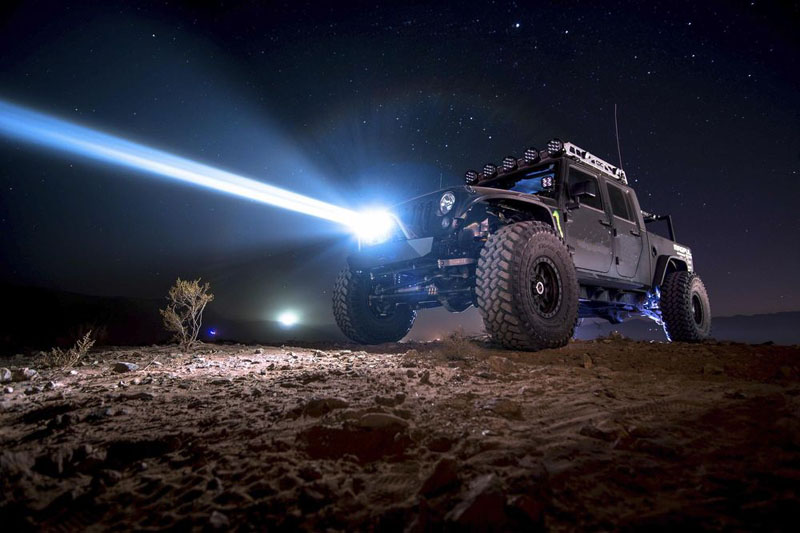NEWS
NEWS
laser headlights are booming and more suitable for autonomous new energy vehicles
29-04-2021
The technology of automotive headlights have been developing very slowly until recently. The very first vehicle headlights used in the 1880s were based on acetylene and oil. Those were replaced in the late 1890s with electric lamps. In the 1960s, the halogen headlight was installed into the car, followed closely by high-intensity discharge (HID) systems also known as xenon. The next evolutionary step was the car LED light, which was introduced earlier in the year 2008, and the car led lights feature lower power consumption, brightness, long life and design flexibility. And now, just 12 years later, the laser headlight is considered the headlight in the future.
The high lighting performance and ability to direct light makes laser headlight an attracting light source in traditional automobiles as well as autonomous new energy vehicles.
Laser headlight uses blue laser diodes in combination with a phosphor to create a high lumen density. Once a blue laser activates the phosphor, it creates white light. This light can be put into a fiber optic module and the beam angle controlled with the shape of an optic or reflector. Controlling the light and beam angle is what makes laser headlight perfect for autonomous vehicles. This is an autonomous vehicle has sensors that detech the environment in order to successful navigate its route, being able to control lighting is important.
As for high beam, Laser headlight can deliver further and more accurately.
Another advantage of laser headlight is that there can be a projector inside the laser headlight. In dynamic lighting on the road, you can put out a pattern, which could be used with autonomous vehicles to communicate with pedestrians or other cars in the road.
Laser headlight has the highest lumen of any light source, or more than 10 times higher than the brightest LED. It also has ten times the range and a beam angle that can be reduced from 8 to 10 degrees down to 1 to 2. The high-power laser light shines onto a phosphor in reflection mode. The resulting light is incoherent white light, classified as an LED from a safety and regulatory perspective. Also, by piping the light through fiber optic cables, the light can be delivered only where needed, reducing unwanted light pollution and glare for dynamic automotive headlights.
Laser headlight sources can also be used in connected cars for wireless, high-speed, light-based Li-Fi communications. It can communicate at 8 gigabits per second with 500 lumen white light sources. It is also possible to pulse the light and get depth coordinates. This could be ideal for smart car applications because with laser light in the vehicle for the high beam, you can exchange data with anything with other smart sensors.
As autonomous vehicles take to the road, communications ability of lighting systems will be increasingly important to maximize safety.With the support of laser headlight, data exchange or flashing messages to pedestrians or oncoming traffic is all possible.


